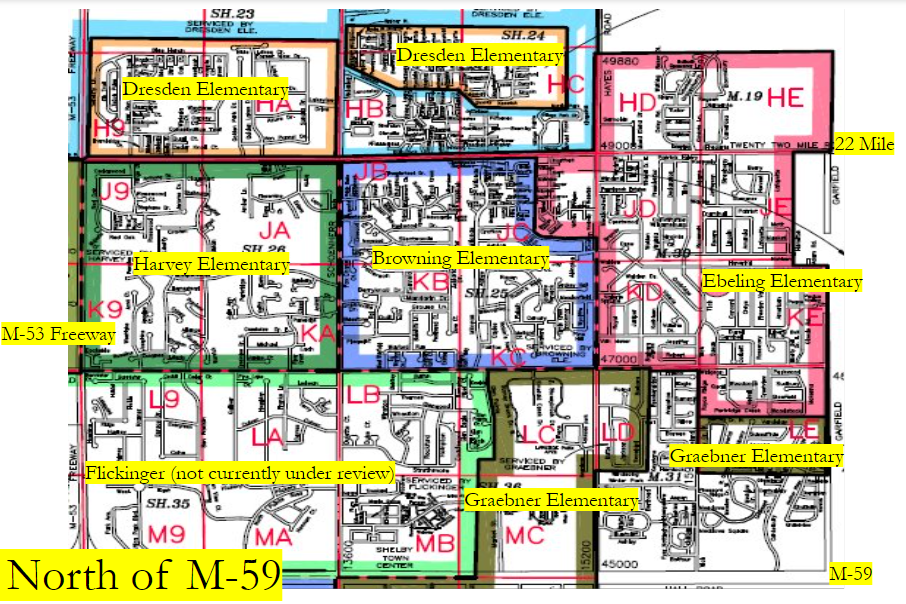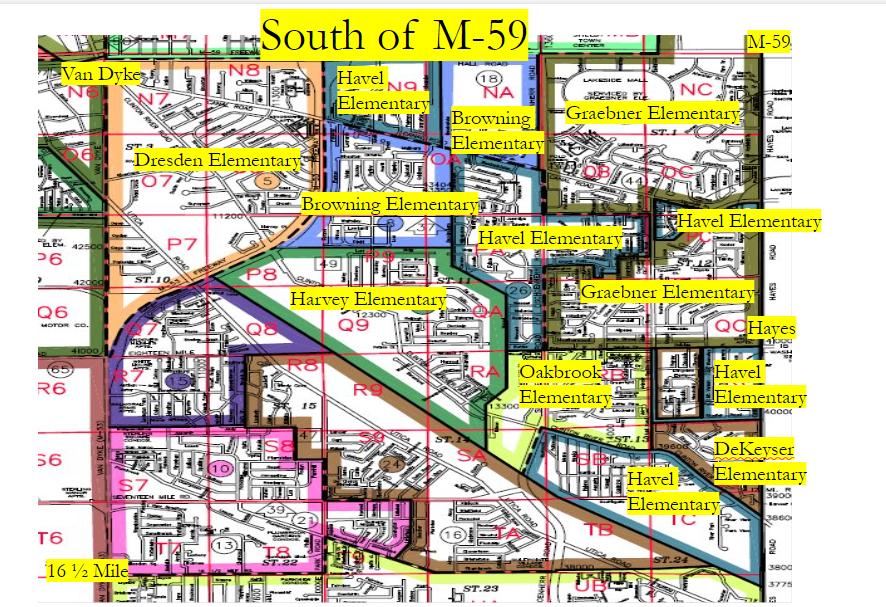- Utica Community Schools
- Questions and Answers
-
Question and Answer
November 2024In May 2023, UCS voters overwhelmingly approved a $550 million safety and success bond issue by 70 percent. The first phase of this bond issue began in the summer of 2024 with projects at school across the district (this link contains an overview of improvements at each school) and set into a motion a reimagining of elementary schools to support student growth and achievement.
Below is an updated Q and A on how the bond issue is reimagining how facilities can be updated to support future achievement, growth and innovation.
What is the long-term vision for elementary facilities?
By building, renovating and innovating, we are able to replace older buildings at sites across the district with facilities that support learning with innovative and inviting instructional spaces. Over the next several years, UCS will begin to implement a design at elementary schools across the district that continues our focus on a safe learning environment and gives our teachers tools to support innovation and academic achievement.
How does the new elementary design support achievement?
The design will provide more spaces for students to engage in meaningful and engaging learning. Innovative and flexible areas will support students working in groups on projects that reinforce their learning and develop essential skills in communication, collaboration and problem solving.
The classrooms will also provide teachers with the flexibility and technology to work with individuals as well as facilitate large and small group instruction.
In all improvements, providing a safe environment remains a priority.
What is the timeline for implementation?
DeKeyser Elementary is scheduled to be opened in the fall of 2025. Information will be shared over the next few months on additional sites selected for design improvements over the next several years.
Why did this process begin with DeKeyser Elementary?
DeKeyser was a school scheduled for improvements to address its “open concept” design. This design, used at several UCS schools that were opened more than 50 years ago, included a floor plan with open areas throughout the school and classrooms without doors or walls. All open concept schools were addressed this summer with the installation of doors and walls. DeKeyser was selected for reconstruction based on the significant amount of work necessary to address the “open concept” design of the school.
What is the criteria being used to evaluate schools?
Schools are being evaluated based on three criteria:
-
Overall safety
-
Age of the Facility
-
Enrollment patterns and trends for the school
What are the next bond issue projects?
Additional schools scheduled for reconstruction will be announced over the next few months. This spring, improvements to athletic areas at all four high schools will begin.
Summer 2025 projects that are part of phase one improvements will be starting in the spring.
Will the current bond issue support the transformation of all elementary schools?
The bond issue begins the facility transformation at the elementary level. Additional resources will be necessary to continue large reconstruction projects at elementary schools and at the secondary level.
The bond issue is supporting critical building needs across our district. Safety remains the priority for the current bond issue and the bond issue will continue significant improvements at each school, such as door and hardware replacement and the installation of shatter-resistant glass.
The bond issue is also supporting other projects such as technology replacement and upgrades, replacement of buses, elementary playground and parking lot replacements, athletic field improvements and needs based on the district’s long-range facilities improvement program.
Attendance Areas
Why are attendance areas being reviewed?
Why are attendance areas being reviewed?
UCS attendance areas were largely established when schools first opened as long as 50 years ago. They represented the best plan to accommodate student enrollment based on existing residential development.
Our community has undergone significant housing growth over the past 50 years. As a result, our elementary enrollment patterns have a number of subdivisions that are geographically disconnected from other neighborhoods that serve the same school. In addition, the district attendance areas have several areas that do not use major landmarks and roadways as boundary lines.
There are several elementary schools where communities become divided as students advance into secondary schools. Students from the same elementary schools attend up to three different junior high schools or are served by two high schools.
How will the attendance area review process support neighborhood schools?
The goal is to better serve families so that elementary students attend schools within their larger neighborhood and can advance together with their peers to secondary schools.
A greater sense of community is maintained as students attend a school with their friends and their friends’ families. At every level – from elementary, to junior high to high school – we want students and their families to feel a sense of consistency, community and belonging.
What is the current focus area?
The attendance review process is currently evaluating the attendance areas for schools that serve Henry Ford II High School and the area east of M-53 and north of the Clinton River.
Below are the areas under discussion by the Enrollment Distribution Advisory Committee.


What is the Enrollment Distribution Advisory Committee?
The Enrollment Distribution Advisory Committee (EDAC) is comprised of parents from each school. The EDAC’s purpose is to review enrollment projections and facility utilization within UCS and provide the district with feedback regarding potential amendments to existing educational programs and pathways.
What is the timeline?
Currently, EDAC is reviewing attendance areas in the Henry Ford II feeder pattern.
After their review is completed over the next several months, work will begin looking at other patterns in UCS until a districtwide review is complete. This entire process is expected to take several years.
-

